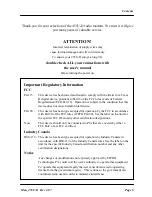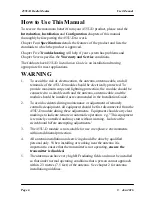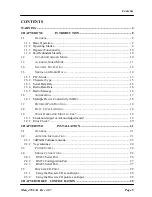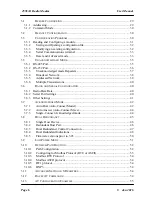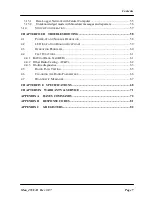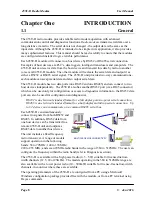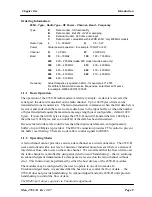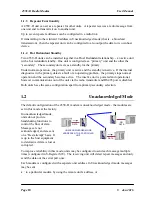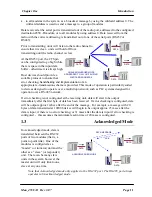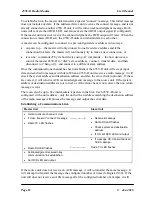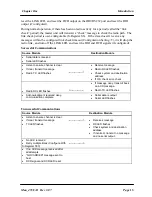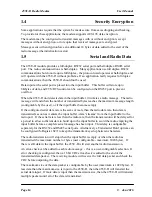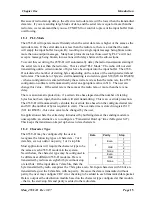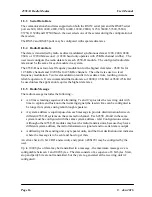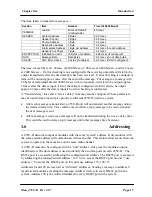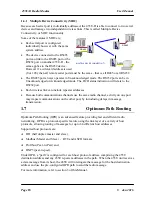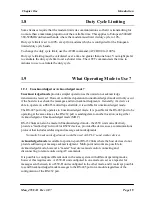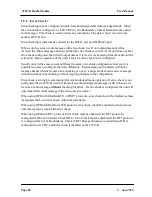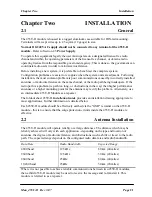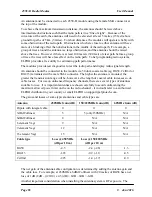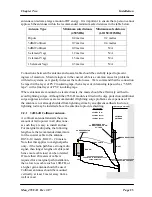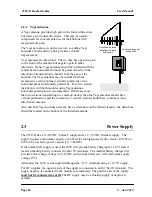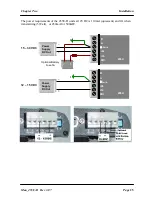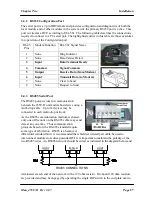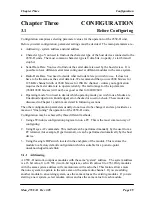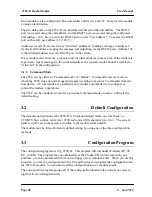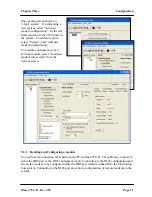
455U-D Radio Modem
User Manual
Page
16
©
Jan 2016
1.5.3 Serial Data Rate
The communications baud rates supported on both the RS232 serial port and the RS485 serial
port are 600, 1200, 2400, 4800, 9600, 14400, 19200, 28800, 31250, 38400, 57600, 76800,
93750, 115200 and 187500 baud - the user selects one of these rates during the configuration of
the modem.
The RS232 and RS485 ports may be configured with separate data rates.
1.5.4 Radio Data Rate
The data is transmitted by radio as direct modulated synchronous data at 1200, 2400, 4800
9600, or 19200 bits/second - (19200 baud only operates with 25KHz channel widths). The
user must configure the radio data rate at each 455U-D module. The configured radio data
rates must be the same for each module in a system.
The 455U-D uses four-level frequency modulation for the highest data rates - 9600 b/s for
12.5 KHz channels and 19200 b/s for 25 KHz channels. The other rates use two level
frequency modulation. Two level modulation results in less data errors, resulting in more
reliable operation. It is recommended that radio rates of 4800 (12.5 KHz) or 9600 (25 KHz)
be used unless the application requires the higher data rates.
1.5.5 Radio Message
The radio message includes the following:-
A 40 msec leading sequence of alternating 1’s and 0’s provides the receiving unit with
time to capture and lock onto the incoming signal (the lead-in time can be configured to
be longer for systems using talk-through repeaters).
A system address is superimposed on each message to provide discrimination between
different 455U-D systems on the same radio channel. Each 455U-D unit in the same
system must be configured with the same system address - refer Configuration section.
Although other 455U-D modules may hear the radio transmissions, because they have a
different system address, the radio transmission is ignored and no serial data is output.
Addressing for the sending unit, any repeater units, and the final destination unit indicates
where the message is to be sent and how to get there.
An error-check (16 bit CRC) and security encryption (AES128) may be configured by the
user.
Up to 1020 bytes of data may be transmitted in a message - the maximum message size is
configurable between 1 and 1020 bytes. The data consists of a sequence of 8 bit bytes. Start,
stop and parity bits are not transmitted, but they are re-generated at the receiving unit (if
configured).


